CRITICAL SPATIAL PRACTICES
Since graduating from architecture school in 2014 and having the opportunity to practice in different studios while being immersed in academic circles, I have disappointed myself with the design professions shaping our environments. Today is more evident than ever that traditional urban planning, landscape architecture, and architectural practices fail in the face of gentrification processes, community displacements, expansion of inequalities and degradation of ecological systems.
Rather than just finding myself frustrated and complacent with these modes of practice, I embarked on the journey to define my own. One where I understand architectural design as a methodology rather than a result, where buildings and landscapes become devices to create conversations and critical situations rather than end products. As Doctor Jane Rendell suggests, “one that is both critical and spatial, and that I call ‘’critical spatial practice’”(1). By defining this practice mode, my role as an architect has enlarged. Whenever I engage in a project, I critically engage with the site and situation to collaborate with communities and activists to incite provocations to the status quo and work alongside them to demand change on those interrogations. As I expand my practice, I have focused my research on creating different relationships with the buildings and landscapes surrounding us beyond established cannons and opening new discourses outside normative imaginaries.
This portfolio is a brief catalog of six experiments of my critical spatial practice. The work is organized under three categories: NARRATIVES, COLLABORATIONS, and DRAWINGS in an attempt to catalog methodologies that have become crucial in defining my practice. The last chapter, PROFESSIONAL PRACTICE, catalogs projects I collaborated on as an architect and landscape architect in different offices and roles.
Please click and follow this link to my website, where you can find a more extensive catalog of projects, films, exhibitions, and pedagogies that complement this portfolio.
INDEX
DRAWINGS
CYBORG LANDSCAPES
ENERGY BLOOM
COLLABORATIONS
PÚBLICO
BOND WITH THE LAND
NARRATIVES
ADIÓS, PLANTATION FUTURES
PROFESSIONAL PRACTICE
LAKE MONONA WATERFRONT
CHILAGUA
UCBM CAMPUS
ABOUT BIO
DRAWINGS
CYBORG LANDSCAPES
Academic Research | Studio Project
Type
Sergio Lopez Pineiro
Advisor
East Boston, Ma, USA
Location 2022
Year Website
Link to website


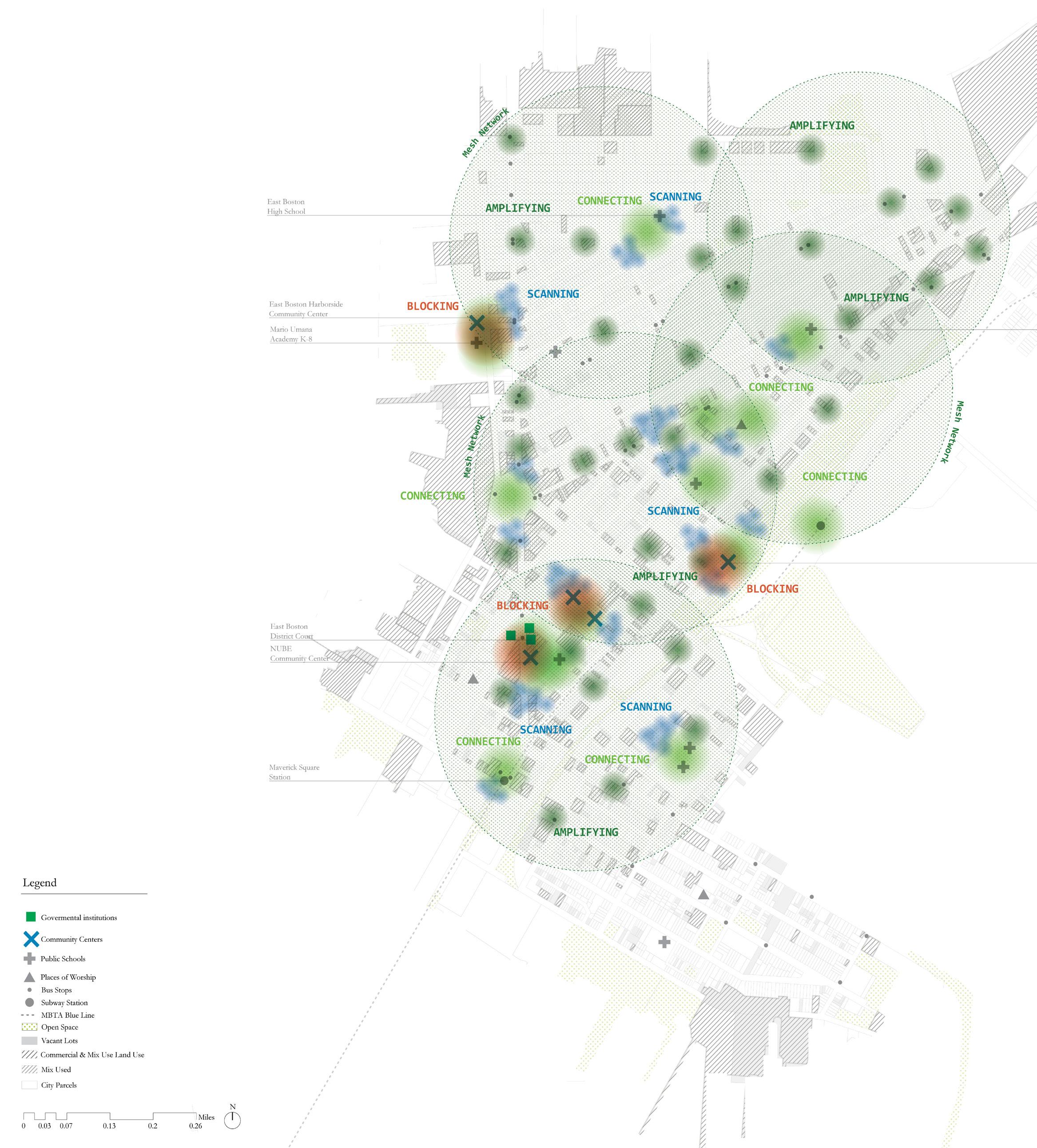
The virtualization of politics through online platforms has emptied public spaces from their civil significance. Simultaneously the rise of social media as the primary space of contemporary political rituals menaces democracy through polarization, distrust, absence of accountability, and lack of mediated discussions.

Through the design of cyborg landscapes - hybrid organisms of entangled hardware, software, humans, and non-human systemsthe project aims to reintroduce political rituals in the near future city’s urban spaces. By reestablishing trust, accountability, and mediation through these landscapes, the project proposes a framework to recover the political agency of public space while suggesting a bridge between the virtual and physical realms.
 A Cyborg Landscape
A Cyborg Landscape
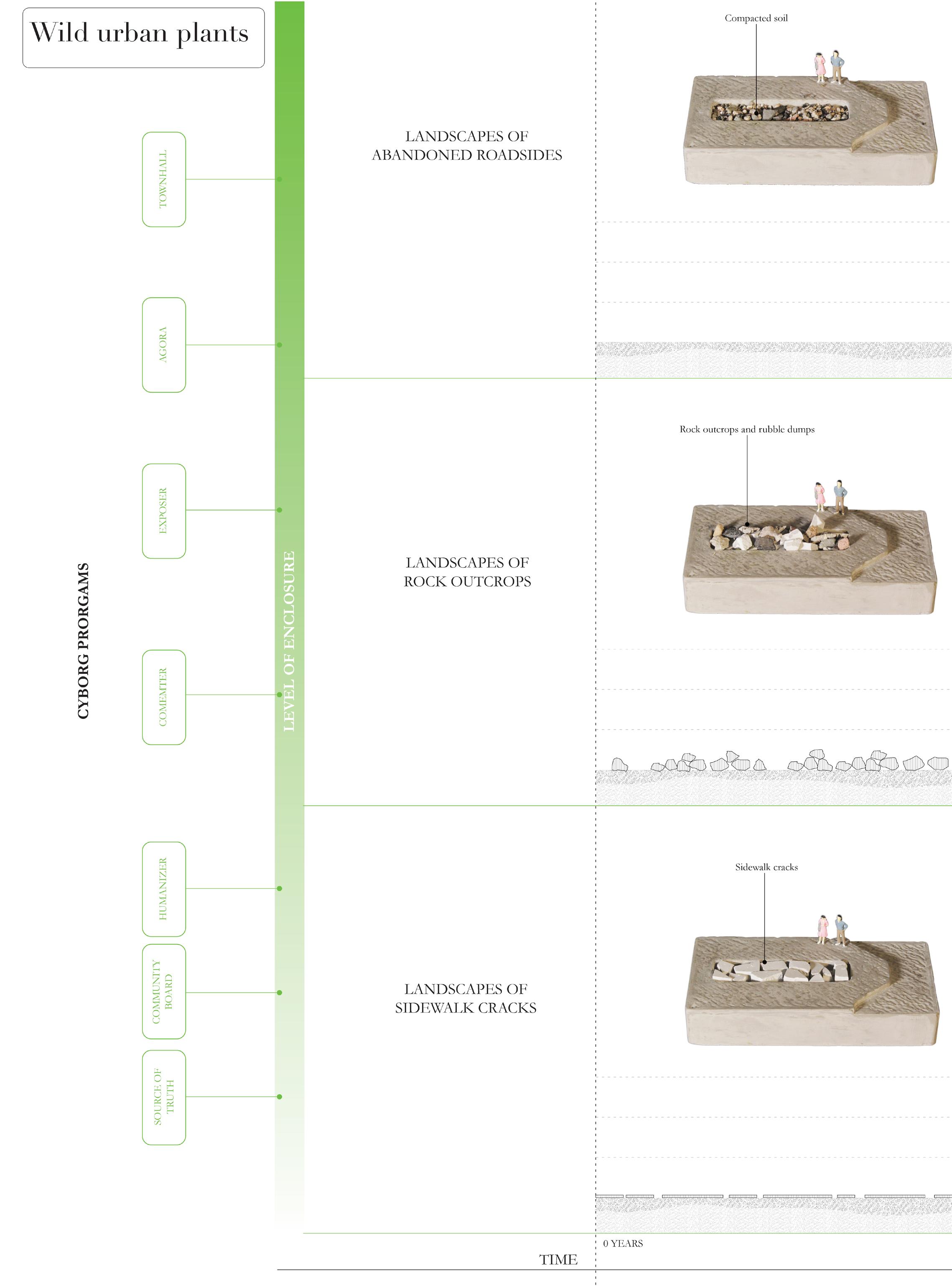



 Illustrator)
Illustrator)


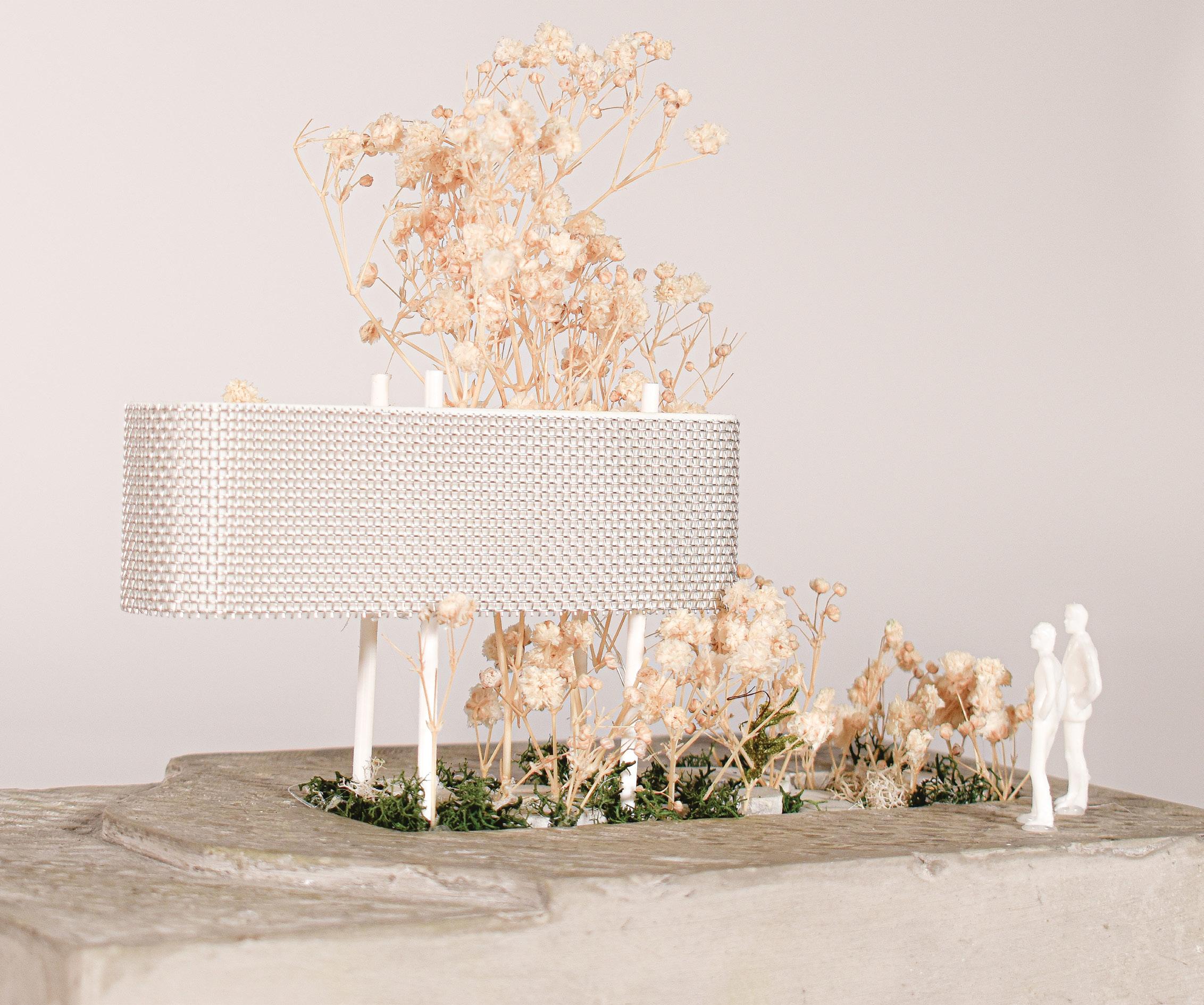 Community Board (Model casted in concrete + 3D printed)
Community Board (Model casted in concrete + 3D printed)
 Agora (Rhino + Adobe Illustrator)
Agora (Rhino + Adobe Illustrator)


ENERGY BLOOM
Academic Research | Studio Project
Type
Danielle Choi
Advisor
Revere, Ma, USA
Location

2021
Year Website
Link to website

The project envisions transforming high-carbon energy production sites into new carbon-zero algae culture landscapes. Proposed as a just transition, the project offers a new relationship between energy production and the territory’s communities. With the creation of the artificial dune system to accommodate and protect algae production, the project imagines a new cultural landscape where communities and energy production interact in novel manners.
 Algae Bloom in Lake Eerie (NASA)
Algae Bloom in Lake Eerie (NASA)
Algae Biodiesel Production Capacity

 Territorial Material Flows (ArcGIS + Adobe Illustrator)
Territorial Material Flows (ArcGIS + Adobe Illustrator)

 Algae Material Flow (Adobe Illustrator)
Algae Material Flow (Adobe Illustrator)




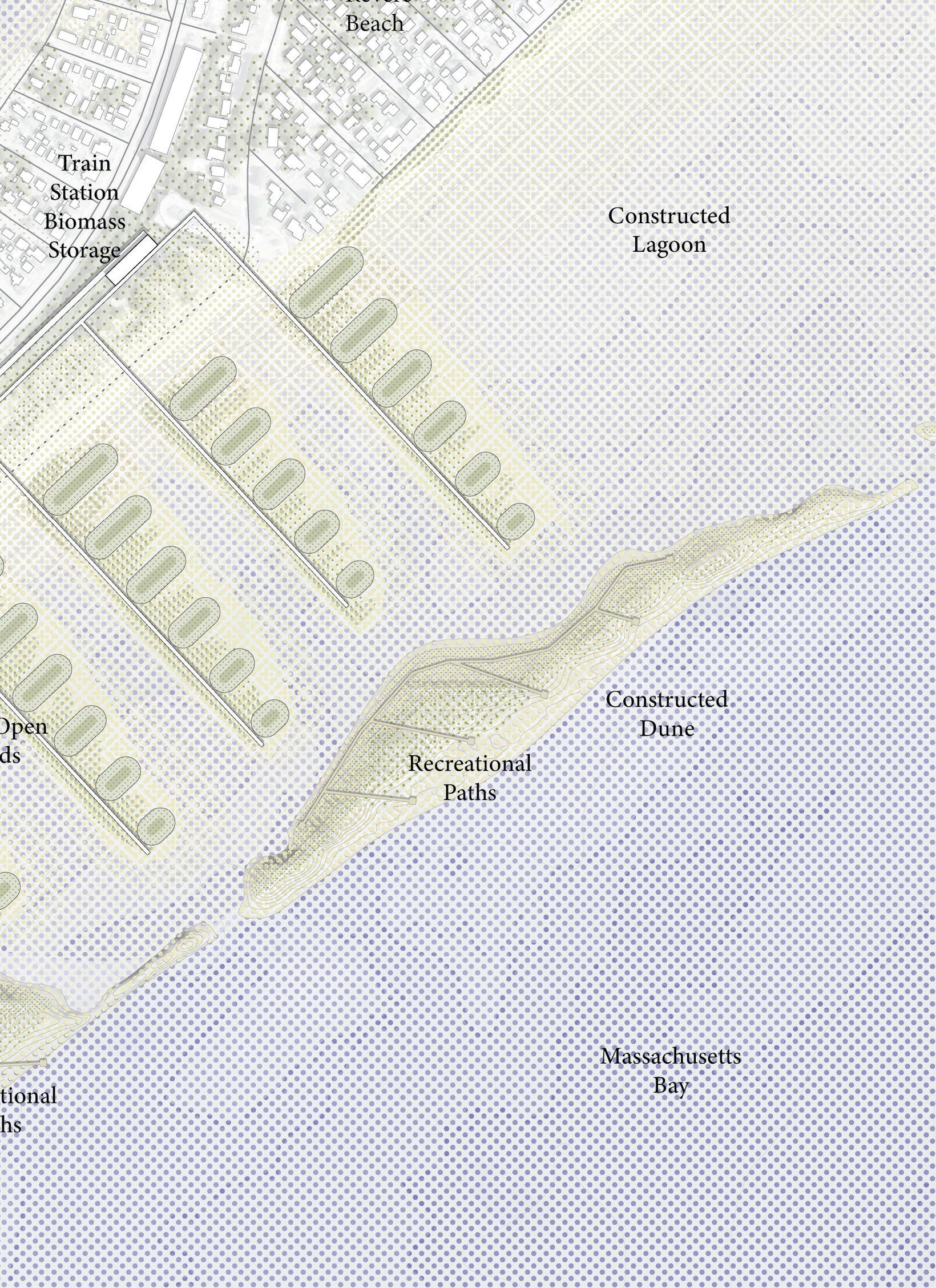


 Landforming (Rhino + Laser Cuter + 3D Printer)
Landforming (Rhino + Laser Cuter + 3D Printer)
Topographic Transformation (AutoCad + Adobe Illustrator)



COLLABORATIONS
PÚBLICO
Design Research
Type
Alejandra Hernandez, Juan David Sánchez
Collaborators
Cajicá, Colombia
Location
2020 - Ongoing
Year Website
Link to website


In the last few decades, we have witnessed the expansion of urbanization across the globe. Contrary to the promise of amelioration of living conditions that urban migration once represented, cities' living conditions deteriorate at an increasing rate for large segments of urban populations. As traditional urban planning and architectural practices seem to fail in the face of gentrification processes, community displacements, growth of informal settlements, and degradation of ecological systems; it is possible to re-establish self-governing operations that are ruled by communal welfare rather than the economic interests of a few?
 Member of a youth group planning a theater performance in the streets of Cajica.
Member of a youth group planning a theater performance in the streets of Cajica.
PÚBLICO is a physical space in Cajicá (Colombia), offering an independent place from where local people and groups can participate in the construction of the environments that surround them. The project questions established city-making practices by creating a setting for citizens to become active agents in reshaping their city through the development and support of communityled endeavors.
PÚBLICO invites citizens to use its space for talks, activities, discussions, film screenings, exhibitions, walks, concerts, installations, classes, performances to create discussions around what it means to inhabit Cajicá. Operating as a place of exchanges between users, viewers, and occupiers, PÚBLICO makes city-making practices accessible to a broader range of people while diversifying the agents involved in the city's production. Instead of letting a few experts planning the future in the name of others, PÚBLICO proposes a scheme where collective interests and wellbeing drive the design and construction of our built and natural environments.
The space is thought with the possibility to adapt to different configurations (AutoCad + Adobe Illustrator)



The garden started as a community-led and generated project to test a new model to support the town's food production and security by creating multiple community gardens around Cajicá. The garden at PÚBLICO is the first garden of many to come where the town's communities develop a network of spaces to share food among the most in need.
The garden in PÚBLICO is managed and maintained by Alejandra and Juan David. They have been collecting seeds from the community and planting them to preserve local agricultural products. They collected the first harvest in late December 2020 and shared all the products with community members who have been struggling to secure food due to the economic crisis caused by COVID-19. For example, the first harvest of carrots and beets was used to make a carrot cake and a beet salad, which Alejandra and Juan David shared with the community.



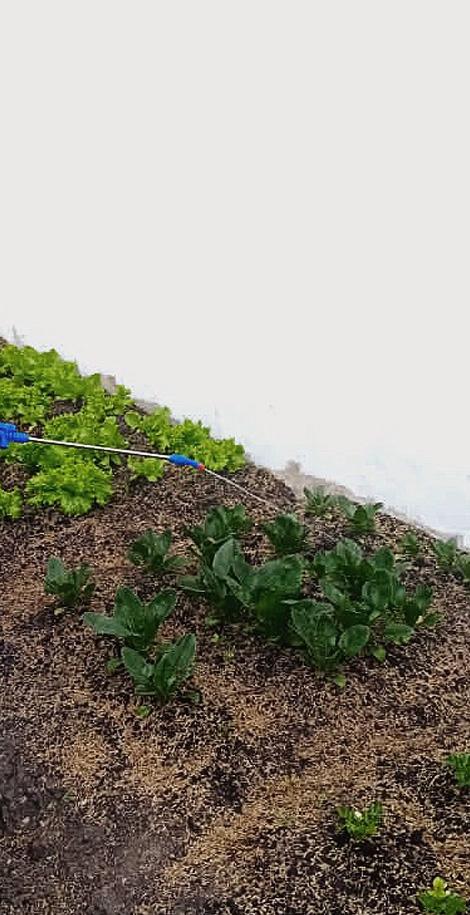
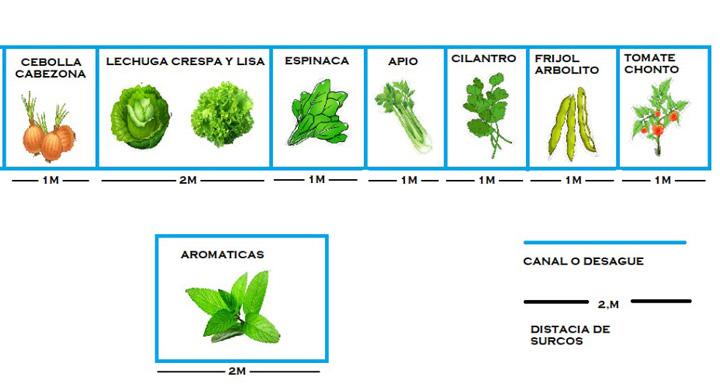
 Alejandra Hernandez)
Harvest from the garden
Alejandra Hernandez)
Harvest from the garden
 An organized walk with the environmentalist group to discuss the degraded ecology of the Bogota River (Image taken by Alejandra
An organized walk with the environmentalist group to discuss the degraded ecology of the Bogota River (Image taken by Alejandra

BOND WITH THE LAND







Bond with the Land constructs a relationship of mutual healing between the self and the landscape, using the natural forces of fire and water experienced through daily, seasonal, and geological time scales to connect the Parrot Creek youth to themselves, the site, and the region. The reconfiguration of the architecture allows for view corridors that actively engage with the landscape while providing dedicated spaces for classrooms, therapy, dormitories, administration, and community activities. An accessible woodland trail unlocks the potential of the 80-acre site, inviting the youth to experience daily weather in the rain garden and dynamic sunsets at the fire pit, witness seasonal fluctuations in flora and fauna at the wetland and controlled burn sites, and take in the natural processes that shaped the valley from the fire tower. The water and fire program matrices and the corresponding badge cards reveal how elements across the site can be activated at various scales, from intimate to public, allowing for flexibility in adapting to the individual journeys of the youth, and nurturing places for comfort and aspirations for progress and growth
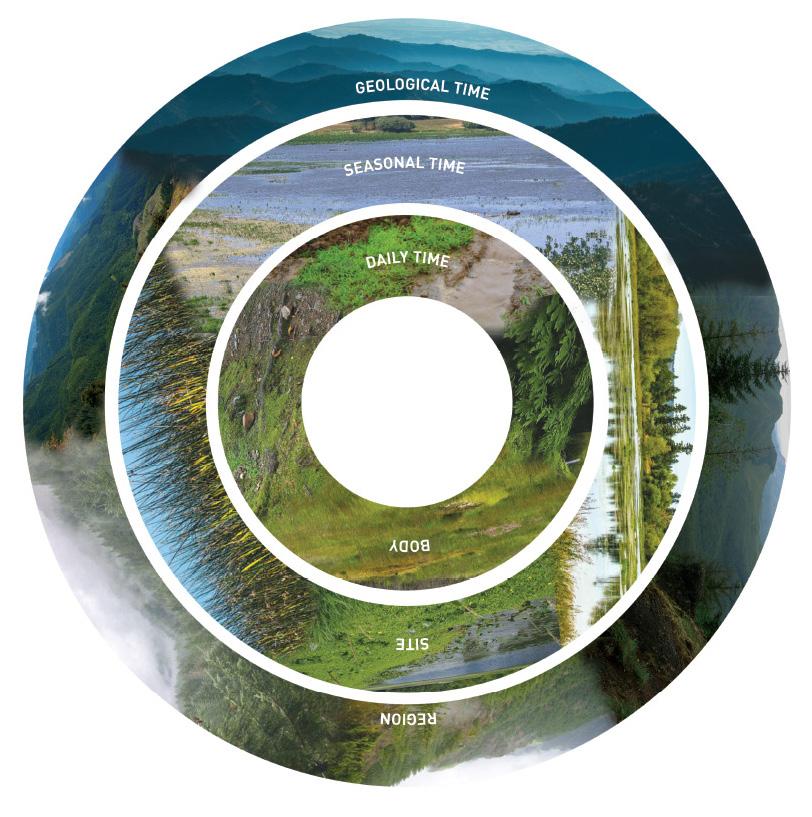
 Landscape as a medium to engage in different time scales (Adobe Illustrator)
Landscape as a medium to engage in different time scales (Adobe Illustrator)




 The wetland during the wet season (Rhino + Adobe Photoshop + Adobe Illustrator)
Site + Seasonal Scale: The Wetland
Concept of mutual healing (Adobe Photoshop + Adobe Illustrator)
Outdoor Auditorium
The wetland during the wet season (Rhino + Adobe Photoshop + Adobe Illustrator)
Site + Seasonal Scale: The Wetland
Concept of mutual healing (Adobe Photoshop + Adobe Illustrator)
Outdoor Auditorium
Wetland (Rhino + Adobe Photoshop + Adobe Illustrator)
 Auditorium
Wetland Parkour
Observation Deck
Wetland
Auditorium
Wetland Parkour
Observation Deck
Wetland


Classrooms
Multi - Purpose
Therapy
Dorms
Body + Daily Scale: The Rain Garden + The Fire Pit (Rhino + Adobe Photoshop + Adobe Illustrator)
Admin/Cafeteria



 The Rain Garden during the wet season (Rhino + Adobe Photoshop + Adobe Illustrator)
The Rain Garden during the wet season (Rhino + Adobe Photoshop + Adobe Illustrator)
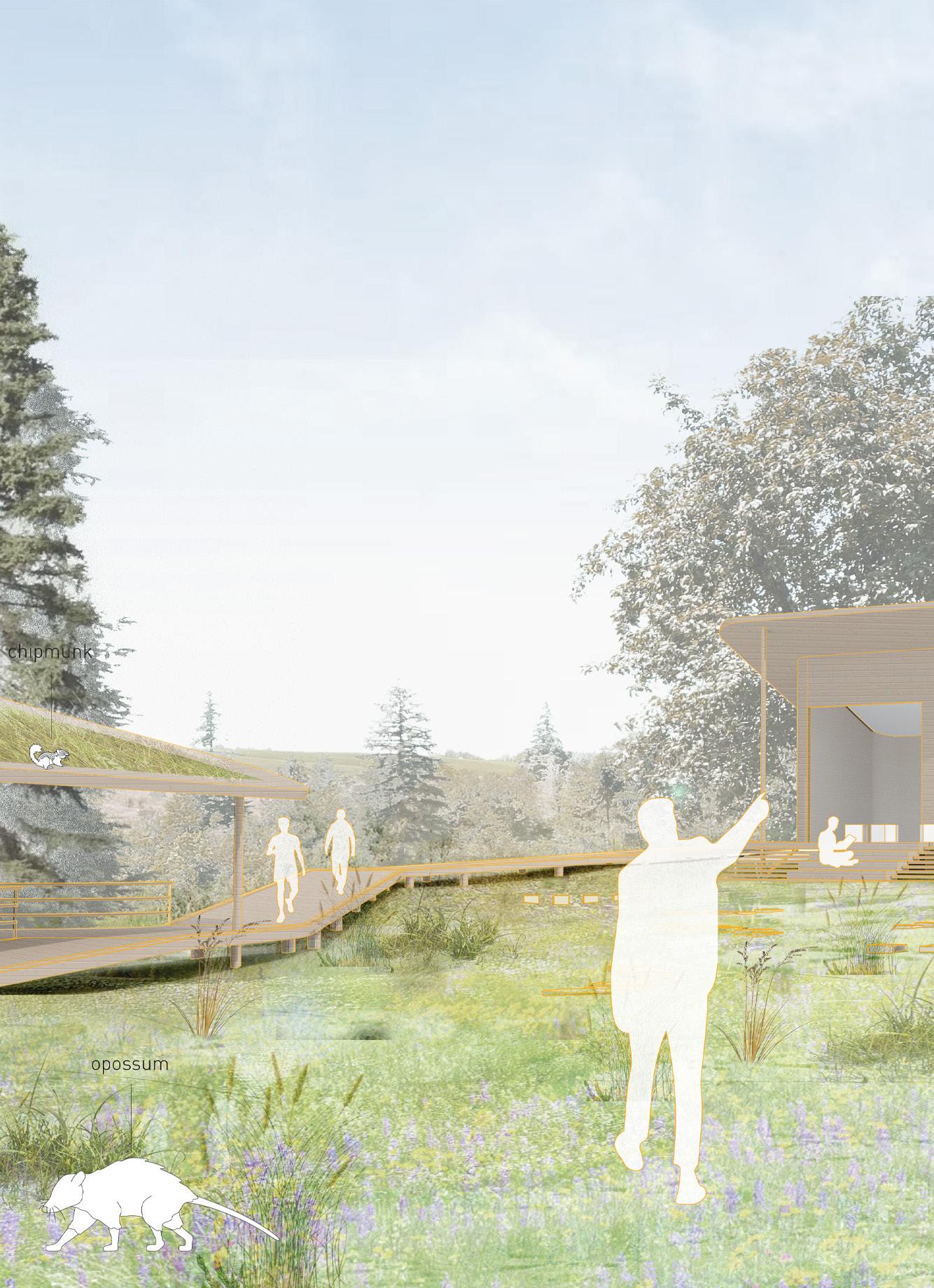

NARRATIVES
ADIÓS,
Type
Julie Mallozzi Advisor
Advisor

 3D Model of “Campanillas Blanco (Rhino + Adobe Premiere Pro)
3D Model of “Campanillas Blanco (Rhino + Adobe Premiere Pro)
In the last decades, as the undeniable effects of climate change have become perceptible to all, contemporary technologies have created a new salvation myth for humans. But as a tropical glacier melts in the mountains of Colombia and the machinery designed to guard it fails, are we [humans] just spectators of our own catastrophe?
Adiós, is a short film that uses cinema techniques (imagery, sound, and narrative) to understand how affect manifests in a time of ecological collapse. By using archival footage, staged ice melts, and documented processes to replicate the glacier, the piece explores the paradoxes created by the separation of humans and nature in Western cosmologies. The film renders the melting glacier as an object of study, to be observed, mapped, modeled, and sound recorded in a failed attempt to prevent its imminent loss. The film becomes the medium that allows the sequence and combination of images and sounds to create a feeling of affect in the viewer.

Watch the Short film on this link: https://vimeo.com/822021227
 Archival Image (Adobe Premiere Pro)
Archival Image (Adobe Premiere Pro)
 3D Ice Model of “Campanillas Blanco (Adobe Premiere Pro)
3D Ice Model of “Campanillas Blanco (Adobe Premiere Pro)

PLANTATION FUTURES
This project is named after Katherine McKittrick’s canonical text: “Plantation Futures.”
Academic Research | Thesis Project
Type
Celina Abba
Project Partner
Rosalea Monacella Advisor

Vacherie, La, USA
Location
2023 - Ongoing
Year Website
Link to website



Our work is guided by the efforts already in motion by local activist groups, descendants’ communities, geographers, poets, and academics. We want to highlight the intragenerational work that the descendant’s communities have undertaken, allowing us, as students at the Harvard Graduate School of Design hundreds of miles away, to begin to help tackle one small part of an extensive, oppressive system: The Plantation System, a system that has disposed thousands of indigenous inhabitants and enslaved peoples of their lands, cultures, and ecologies.
Oak Alley Plantation, located in Louisiana, is the most famous and visited plantation in the United States. Today the plantation is preserved as a cultural landscape reflecting and glorifying the values of the Antebellum era. What is absent at Oak Alley and all the plantations upon which the United States was formed is the recognition of the forged Black landscapes used for refuge, joy, and resistance: the swamp, the ditch, and the plot.
The plantation was a complex of white supremacy that linked the exploitation of racialized bodies and non-human agents to fertile lands and commodities. These landscapes emerged as an economic and political model based on dislocated forced labor, intensive land exploitation, and global commerce supported by land dispossession, labor extraction, and racialized violence.
The thesis questions the concept and practices of heritage in the profession of landscape architecture as it is embedded in the colonial imaginary and its racial legacies. Moments for accountability and restoration are conceived, such as the Citizen Assembly, which holds industry and systems of dispossession to account through new forms of democratic processes and landscape-based evidence collection. Black ecologies emerge through layering archival narratives, poetry, and literature, foregrounding lost narratives within the plantation. These narratives envision radically different futures, where interspecies kinship and empathy surface as new ecologies that point to new Black futurities.
As the project evolves from an academic thesis into an activist endeavor, the project uses design research to incite provocations to the concept and practices of heritage in the profession of landscape architecture as it is embedded in the colonial imaginary and its racial legacies.


[Act 1] ONE LANDSCAPE, ONE NARRATIVE

Scene 1 Oak Alley
Scene 2 The Ditch, The Plot, The Swamp
Scene 3 Obscuring






[Act 2] THE COSMOVISION OF EXTRACTIVISM
Scene 1 Plantation Systems
Scene 2 From Moral Contamination to Toxic Contamination
 Leonhardt, and H. S. Graham. 1861. “Map the Slave Population of the Southern States
Leonhardt, and H. S. Graham. 1861. “Map the Slave Population of the Southern States



 Abba, Celina, Cavelier, Enrique. 2023. “Movement Plan.” (ArcGIS + Rhino + Adobe Illustrator)
Abba, Celina, Cavelier, Enrique. 2023. “Movement Plan.” (ArcGIS + Rhino + Adobe Illustrator)

[Act 3] PLANTATION FUTURES
Scene 2 Black Ecologies
 Abba, Celina, Cavelier, Enrique. 2023. “Crossing.”
Abba, Celina, Cavelier, Enrique. 2023. “Crossing.”

 Abba, Celina, Cavelier, Enrique. 2023. “Filled Ditch”(Rhino + Lumion + Adobe Photoshop + Adobe Illustrator)
Abba, Celina, Cavelier, Enrique. 2023. “Filled Ditch”(Rhino + Lumion + Adobe Photoshop + Adobe Illustrator)
(Rhino
Access full video here: https://vimeo.com/839922291

Hundreds of ditches were carved into the earth by indentured labor. These ditches were engineered landscapes that controlled the microclimates of the sugarcane crop. The casts from the ditch are inserted as an index to the past. The cuts bring visitors into the historic ditches, where the enslaved prayed, traveled, and hid from the master. The descent shifts the visitors’ perspective, bringing them into the soils where the enslaved labored.
 Abba, Celina, Cavelier, Enrique. 2023. “Filled Ditch Methodology”
+ Lumion + Adobe After Effects)
Abba, Celina, Cavelier, Enrique. 2023. “Filled Ditch Methodology”
+ Lumion + Adobe After Effects)
Enrique. 2023.“Plot Methodology Video” (Rhino + Lumion + Adobe After Effects)
Access full video here: https://vimeo.com/839926091
As the streams transform the monoculture of sugarcane into a muddy and swamp landscape, the Plot emerges on the edges of the stream. It is created through the accumulation of the soil from the carving of the stream. The Plot is a multispecies garden of nurture and care. Indexes in the ground following the geometry of the cooking pot become spaces to gather around the cooking fire to share stories, exchange seeds and allow for the emergence of new black imaginations. The Plot becomes a space of gratitude and celebration of the land, the water, the plants, and the animals that constitute this landscape.

 Abba, Celina, Cavelier,
Abba, Celina, Cavelier, Enrique.
Abba, Celina, Cavelier,
Abba, Celina, Cavelier, Enrique.

Abba, Celina, Cavelier, Enrique. 2023.“Material as Evidence” (Rhino + Lumion + Adobe After Effects)

Access full video here: https://vimeo.com/844056833
Rather than glorify the master narrative master’s house, what remains and rooms occupied by the enslaved. spaces as “domesticity’s spatial which we contend are the kitchen, room. Translucent fabric traces permanently transforming with site. A reversal of narrative centers experiences within the afterlife

narrative through the and is visible are the enslaved. Kanzler terms these spatial unconscious,”13 kitchen, pantry, and boiler the master’s house, the elements on centers black women’s of the plantation.



THESIS FINDINGS
 Abba, Celina, Cavelier, Enrique. 2023. “Ecological (ArcGIS + Adobe Illustrator + Adobe Photoshop)
John Bel Edwards Governor of the State of Louisiana Office of the Governor PO Box 94004 Baton Rouge, LA 70804
Dear Governor Edwards,
Abba, Celina, Cavelier, Enrique. 2023. “Ecological (ArcGIS + Adobe Illustrator + Adobe Photoshop)
John Bel Edwards Governor of the State of Louisiana Office of the Governor PO Box 94004 Baton Rouge, LA 70804
Dear Governor Edwards,
We are writing to express our deep concern about the continuing harm caused by the petrochemical industry and plantation tourism in the state. Louisiana has a long and painful history of slavery, violence, and exploitation against Black and Indigenous communities. Many of these communities face the legacy of this violence today through toxic pollution from the petrochemical industry
1) Moratorium on Petrochemical Industry
The petrochemical industry has a long history of exploiting communities of color for profit. These communities are often targeted for new petrochemical plants and pipelines, disrupting their lives and risking their health. Cancer Alley, Louisiana, is a region along the Mississippi River home to numerous petrochemical plants and refineries. The area has earned its nickname due to the high rates of cancer and other health problems among its residents, who are predominantly Black and Indigenous The petrochemical industry has been linked to numerous health problems, including respiratory issues, congenital disabilities, and cancer. Cancer Alley is no exception, and residents of the region have been diagnosed with cancer at rates significantly higher than the national average. In addition to the health risks, the petrochemical industry also substantially impacts the environment in Cancer Alley. The region has been plagued by toxic spills and leaks from petrochemical facilities, which can contaminate soil and water sources and pose a risk to wildlife and ecosystems.
The continued operation of the petrochemical industry in these areas is perpetuating the harm these communities have experienced for generations. It contributes to environmental racism, a phenomenon in which communities of color bear a disproportionate burden of environmental pollution and harm.
We second the call for a moratorium on the petrochemical industry in areas that have experienced violence from plantations and slavery is necessary to give us the time and space we need to find a way to operate this industry without causing further harm to these communities. The purpose of a moratorium on the petrochemical industry is to give policymakers, regulators, and industry stakeholders time to develop strategies and policies to reduce the negative impact of these facilities on the environment and public health. Please consider Rise St. James and Friends of the Earth guidelines, listed below, for ways forward.
https://risestjames.org/moratorium
https://actionnetwork.org/petitions/demand-chase-bank-denounce-formosa-plastics-petrochemicals-plant
The Cultural Landscape Foundation 1900 L Street NW, Suite 700 Washington, DC 20036
Dear Cultural Landscape Foundation,
We are writing as landscape architecture students at the Harvard Graduate School of Design. Through the design research embedded in our thesis, “Plantation Futures,” we recommend that the Cultural Landscape Foundation change how plantations are categorized in its archive and further expand its effort to diversify its Board of Directors.
1) Recategorization of plantations
Currently, the foundation lists Plantations in its archive under “designed landscape.” Its cultural and historical value is categorized as “Garden and Estate” and “Colonial Garden.” The foundation recognizes all the plantations in its catalog through these same categories. Nowhere in its description does it acknowledge the production of the landscape by the enslaved, their embodied knowledge, their labor, nor the violence under which they built these landscapes.

We believe plantations should not be considered “designed landscapes” or “colonial gardens” but sites of historical and cultural trauma. They were created through the brutal exploitation of enslaved people, who were stripped of their freedom, humanity, and dignity. The landscapes produced on plantations were not just the result of “design” but also of violence, oppression, and exploitation.
Plantations are landscapes that are harmful to the descendant communities, reminding them of their ancestors’ suffering and trauma. The current categorization in your archive reinforces the erasure of their history, knowledge, and contributions to landscape architecture. We strongly suggest that the foundation recategorize plantations in its archive to acknowledge these sites’ historical and cultural significance. By doing so, the foundation can take a step towards a more just and equitable representation of these landscapes.
We suggest that the recategorization of plantations be done in collaboration with descendant communities. Descendant communities have been historically excluded from the narratives of plantation landscapes. They should be given an active role in the creation of a new category that recognizes the trauma but also foregrounds the erased landscapes and narratives of the enslaved. This collaborative effort will allow a more nuanced and inclusive understanding of these landscapes and their complex histories.
Letter to the Governor of the State of Louisiana Letter to the Board of the Cultural Landscape Foundation
“Ecological Impacts of the thesis at the larger scale.”
PROFESSIONAL PRACTICE
LAKE MONONA WATERFRONT
Competition Entry
Type
Work done as an Agency Landscape + Planning member in collaboration with MSR Design, raSmith, Kimley-Horn, and Middleton Construction Consulting, with Spoken Frame Media, Victoria Freeman, and Cristian Umana. Collaborators

Madison, USA
Location 2023 Year
 Adobe Illustrator) done in collaboration with Laura Brusson
Adobe Illustrator) done in collaboration with Laura Brusson
The Lakes serve as a mirror, reflecting the City literally on a bright day and symbolically in terms of where investments are made. Madison’s future treatment of Lake Monona offers the chance to reflect City values to be equitable, welcoming, and environmentally healthy.
The guiding principles of this Framework Plan emerged from an intention to honor and integrate multiple past legacies while staying true to 21st-century values - many of which seek to evolve past the last century’s decision-making to a more equitable, healthy future. This Framework Plan imagines a revival for Lake Monona that honors layers of the past while embracing a powerful long-term vision for all of the community.

A Healthy and Functional Ecosystem

The first foundational move of this Framework Plan is to establish a living shoreline for the entire 1.7 miles of the site. A living shoreline is an ecologically restored and dynamic edge that provides multiple benefits, including water quality enhancement, improved habitat value, and more seasonal beauty.
Safe and Welcoming Paths for All
This Framework Plan delivers on the desire for multiple, separated paths that allow for different types of movement. The trails offer equitable access to other users - from commuters on John Nolen Drive and the bicycle path to neighbors looking for a slow, natureengaged stroll.
Olin Park (Rhino + Adobe Photoshop + Adobe Illustrator) done in collaboration with Cristian Umana. Monona Hill (Rhino
Crossing
Walk on Water
BRITTINGHAM BAY
Walk on Water
Marsh
Bicycle Path
Marsh
Fishing Overlook
THE CAUSEWAY

Sitting Space
Bicycle Path
Bicycle Path
Overlook
Spectator Space
Beach
Community Green
Fishing Overlook
Paddling
Marsh

CHILAGUA
Master Plan
Type
Work done as Project Manager in collaboration with 2
Latitudes, Laura Gomez, VIC, JFP
Collaborators
Nocaima, Colombia

Location
2018 - 2021
Year

The Chilagua Master plan is a development project to revitalize a previously abandoned 30-hectare site in Nocaima, Colombia. This transformational project envisions the creation of 32 carefully designed parcels for second homes, embracing the unique challenges and opportunities presented by the site’s characteristics. The project aims to harmonize integrating human spaces with the natural environment while

1. Site Revitalization: The primary objective is to breathe new life into the neglected site, fostering a thriving community of second homes celebrating the area’s natural beauty and heritage.

2. Sustainable Off-Grid Living: The project aspires to be selfsufficient by incorporating innovative off-grid technologies. Each home will be equipped with solar panels to generate electricity and water collection systems to ensure an autonomous water supply.
3. Preservation of Natural Beauty: A central goal is to honor the incredible landscape nurtured by the founder’s grandfather three decades ago. The master plan will retain and enhance this existing green haven while providing homeowners with curated paths to experience and appreciate the lush surroundings.
4. Water Ravine Management: The project will thoughtfully address the four water ravines within the site, implementing erosion control measures and integrating them as natural elements in the landscape design.
 Section for the elevated trail
Section for the elevated trail
UCBM CAMPUS
Master Plan
Type
Work done an Equipo Mazzanti member in collaboration with Giancarlo Mazzanti, PROAP, Felipe Guerrero, Marcela Gomez, Omar Rota, Camilo Magni, Ekomedia, and Rolformados.
Collaborators
Rome, Italy
Location 2018

Year Website
Link to website
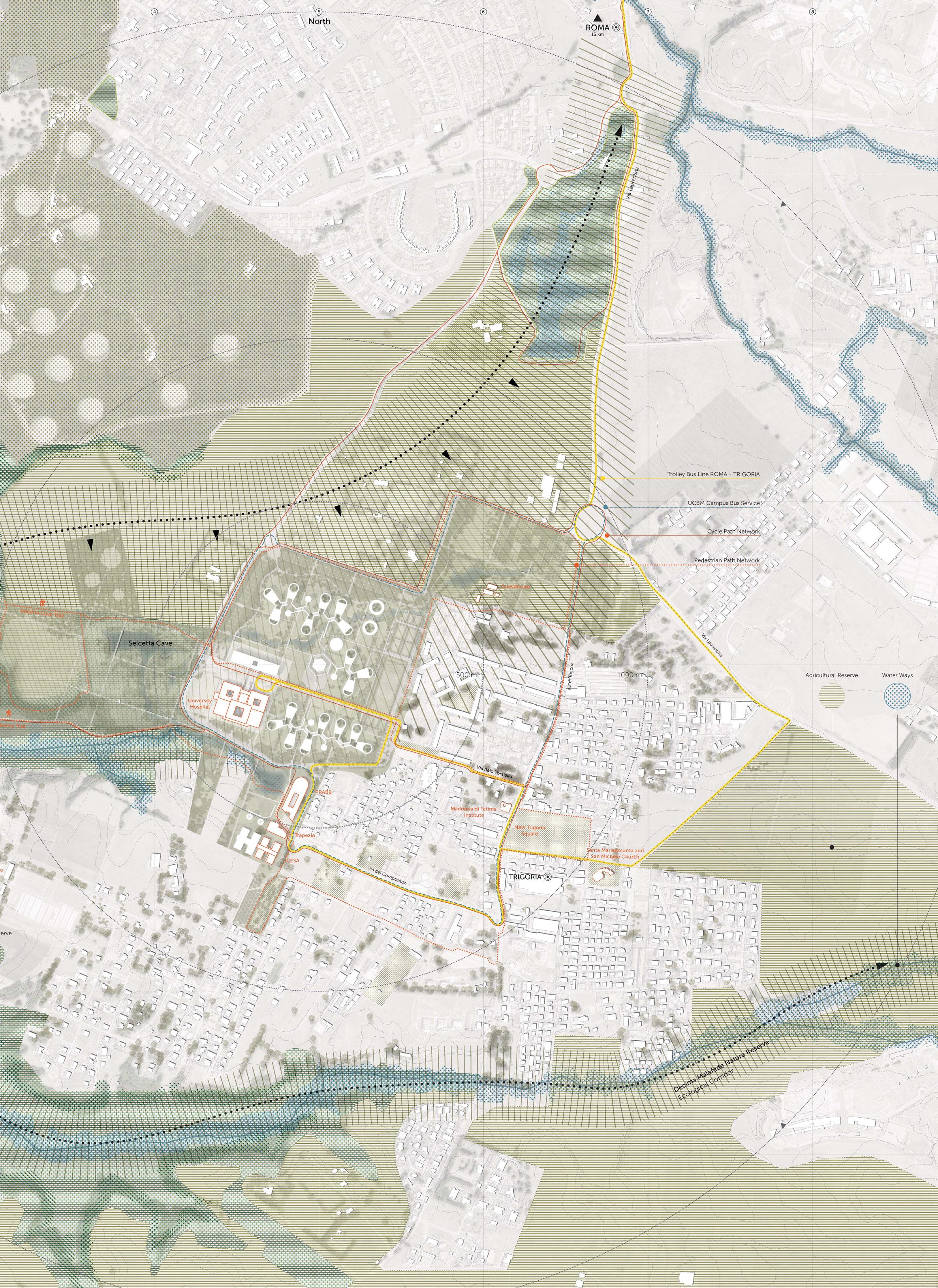
System strategies ( Adobe Illustrator)


The UCBM CAMPUS is a competition entry for a university building and campus in Rome. The proposal will juxtapose actions and activities to foster a creative learning environment. The project places laboratories, classrooms, and offices next to play areas, gardens, and sports facilities to create new spatial and programmatic dynamics that foster new spaces to learn and relate differently.
The campus comprises interchangeable pieces, enabling the project to adapt over time. More than a finished and enclosed architecture, we propose developing an open and adaptive system composed of modules and patterns of association. This strategy ensures adaptability to diverse situations, like programmatic, economic, or educational. Capable of generating more than buildings, the open configuration concept promotes material strategies with the capacity to grow, change and adapt according to specific or temporary circumstances.
The notion of functionality and efficiency in the university space is transgressed by the idea of experience and play as structuring elements of learning. The Architecture of education programs is no longer just about building functional structures for productivity but designing places where play can emerge as a primary spaceorganizing strategy, where spatial discontinuity and diversity could become a multiplier of cognitive and learning experience.




 Model (Laser Cutter + Metal working)
Model (Laser Cutter + Metal working)




 Illustrator)
Illustrator)


ABOUT
BIO
I am a spatial practitioner and researcher. I work across landscape and architecture through design research, exhibition, and teaching. I believe in the capacity of design to transform our current realities by imagining radical futures and mobilizing action.
I recently graduated with distinction from the Harvard University Graduate School of Design (2023), holding a master’s in landscape architecture. I was awarded the Landscape Architecture Thesis Prize and the American Society of Landscape Architects Honor Award. I received an M.A. in Situated Practice with distinction from the Bartlett School of Architecture (2021), where I was awarded the Bartlett Medal. And I received my Bachelor of Science in Architecture with high honors from the University of Virginia (2014), where I was awarded the Design Excellence Award and the Sean Steele Nicholson Award.
Over the years, I worked at different architecture and landscape architecture practices like Hart Howerton in New York (USA), El Equipo Mazzanti in Bogotá (Colombia), Michel Desvigne in Paris (France), and Agency Landscape + Planning in Cambridge (USA). I collaborated with talented designers and managed various ambitious projects, award-winning competitions, and exhibitions in Colombia, Chile, Italy, and France. Notably, I led the UCBM Master plan International Design Competition in Rome, Italy, The International Antarctic Center in Punta Arenas, Chile, and the You Play, We Play Exhibition in Milan, Italy.

